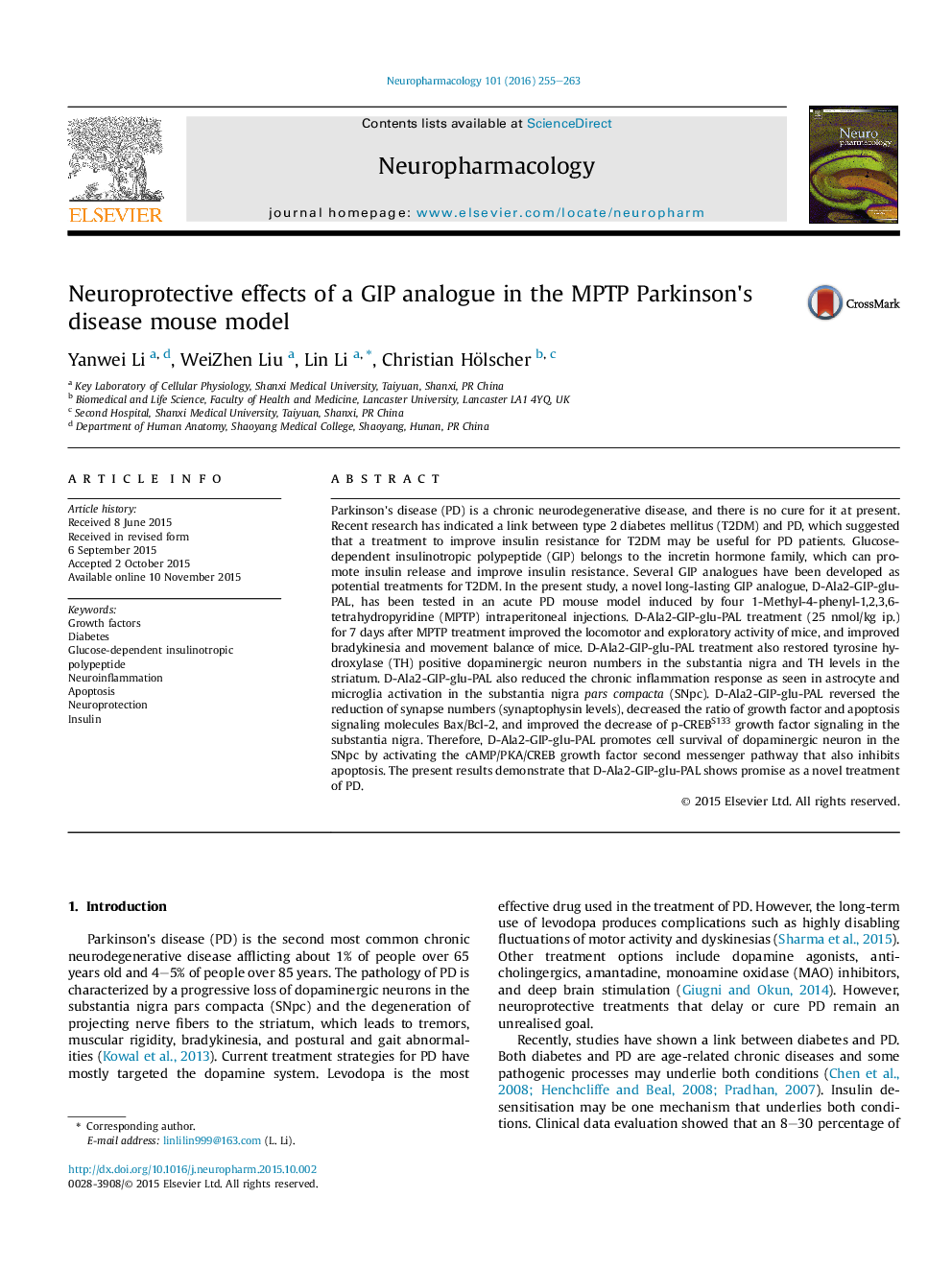| کد مقاله | کد نشریه | سال انتشار | مقاله انگلیسی | نسخه تمام متن |
|---|---|---|---|---|
| 2493117 | 1556614 | 2016 | 9 صفحه PDF | دانلود رایگان |

• The results show for the first time that GIP analogues have neuroprotective properties in PD.
• GIP analogues are currently developed as treatments for type 2 diabetes.
• A clinical trial of GIP analogues would be very easy to conduct with an FDA approved drug.
Parkinson's disease (PD) is a chronic neurodegenerative disease, and there is no cure for it at present. Recent research has indicated a link between type 2 diabetes mellitus (T2DM) and PD, which suggested that a treatment to improve insulin resistance for T2DM may be useful for PD patients. Glucose-dependent insulinotropic polypeptide (GIP) belongs to the incretin hormone family, which can promote insulin release and improve insulin resistance. Several GIP analogues have been developed as potential treatments for T2DM. In the present study, a novel long-lasting GIP analogue, D-Ala2-GIP-glu-PAL, has been tested in an acute PD mouse model induced by four 1-Methyl-4-phenyl-1,2,3,6-tetrahydropyridine (MPTP) intraperitoneal injections. D-Ala2-GIP-glu-PAL treatment (25 nmol/kg ip.) for 7 days after MPTP treatment improved the locomotor and exploratory activity of mice, and improved bradykinesia and movement balance of mice. D-Ala2-GIP-glu-PAL treatment also restored tyrosine hydroxylase (TH) positive dopaminergic neuron numbers in the substantia nigra and TH levels in the striatum. D-Ala2-GIP-glu-PAL also reduced the chronic inflammation response as seen in astrocyte and microglia activation in the substantia nigra pars compacta (SNpc). D-Ala2-GIP-glu-PAL reversed the reduction of synapse numbers (synaptophysin levels), decreased the ratio of growth factor and apoptosis signaling molecules Bax/Bcl-2, and improved the decrease of p-CREBS133 growth factor signaling in the substantia nigra. Therefore, D-Ala2-GIP-glu-PAL promotes cell survival of dopaminergic neuron in the SNpc by activating the cAMP/PKA/CREB growth factor second messenger pathway that also inhibits apoptosis. The present results demonstrate that D-Ala2-GIP-glu-PAL shows promise as a novel treatment of PD.
Journal: Neuropharmacology - Volume 101, February 2016, Pages 255–263